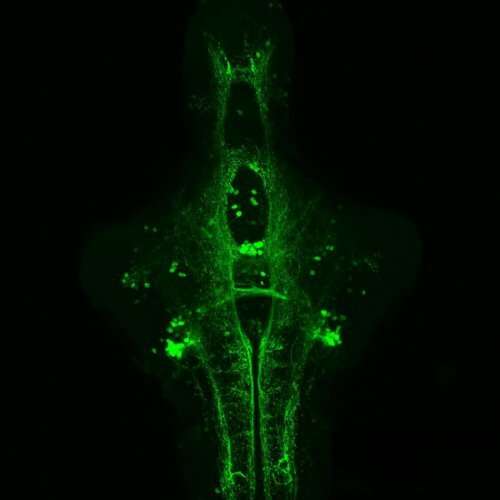Researchers study the link between motor neuron activation and speed

Whether running away from a predator or to win an Olympic gold, how fast we run determines the final outcome. Locomotion is produced when limb muscles contract in a co-ordinated fashion. This, in turn, is caused by electrical impulses sent by nerve cells called motor neurons located in the spinal cord. Earlier work showed that based on an animal's momentary needs, brain circuits select a suitable course of action and set the frequency of motion. Then, just like engaging gears in an automobile, spinal 'speed' modules are selectively activated to achieve a certain speed. Thus, motor neurons belonging to the fast module are activated only during fast frequency movements, but are silent during slower frequency movements. Now, scientists at the National Centre for Biological Sciences (NCBS), Bangalore show that parallel neural pathways that bypass the brain's tight frequency control enable animals to move faster.
In their study, the scientists chose to study speed regulation in larval zebrafish during a reflex behavior called optomotor response. This behavior allows zebrafish to maintain a stable position in streams by generating swims to counter any drift. They evoked this behavior in the lab by playing black and white moving bars (gratings) on a screen placed underneath the fish. While larvae were pinned on a dish to allow measurement of electrical activity from motor neurons, they still responded reliably to the visual stimulus by producing motor commands for swimming. Using this preparation it was possible to probe mechanisms of speed regulation at a single cell level.
Dopamine, a chemical produced by some nerve cells, is released at multiple sites including onto motor neurons. The researchers at NCBS discovered that when the receptors for dopamine were activated, zebrafish larvae swam faster for the same grating stimulus. On closer examination, they found that larvae could swim faster because for every tail beat, the tail made larger amplitude bends. This implies that to achieve faster swims, more motor neurons were activated. Recording the electrical activity of single motor neurons, the researchers found that not only was the slow speed module activated more vigorously after dopamine receptor activation, but fast module motor neurons, which were hitherto silent, were also activated. This was caused by direct actions of dopamine on the motor neurons, which caused the motor neurons to be more excitable.
These results are exciting because they show that motor neurons, which are thought to mostly only relay the commands coming to them, are capable of altering behavioral output via modulation of their activity patterns. This study shows that, even after the brain has issued the command for a movement, changing the properties of motor neurons can alter the final behavioral outcome. Such motor neuronal plasticity can be exploited for rehabilitation after spinal cord injury or stroke.
More information: Urvashi Jha et al, Neuromodulatory Selection of Motor Neuron Recruitment Patterns in a Visuomotor Behavior Increases Speed, Current Biology (2020). DOI: 10.1016/j.cub.2019.12.064
Journal information: Current Biology
Provided by National Centre for Biological Sciences




















